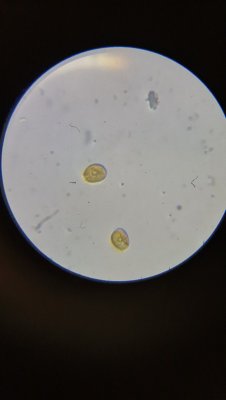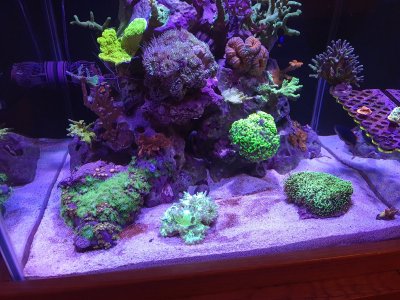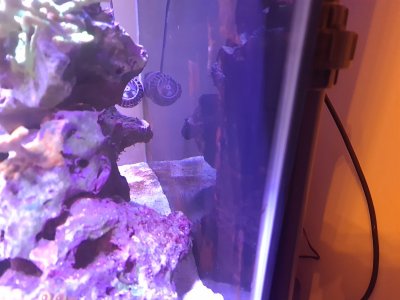- Joined
- May 22, 2016
- Messages
- 6,581
- Reaction score
- 10,164
yep. diatoms. looking good.I'm guessing these are diatoms?
Follow along with the video below to see how to install our site as a web app on your home screen.
Note: This feature may not be available in some browsers.
yep. diatoms. looking good.I'm guessing these are diatoms?
yep. diatoms. looking good.
it's an unusual kind, but it's low motion, so I'd treat it like Large Cell.Can someone please confirm if it’s small cell or large cell?
Can you confirm what this is? They move fairly quickly and look to buzz around each other. The sand is beginning to exhibit hair like appearance and some bubbles are visible.
you suck that stuff off the coral tips and it's large cell amphidinium?I’ve just identified and confirmed a large cell amphindinium Dino outbreak in my tank after dropping nutrients
That’s the best match I have to go off of, they are definitely Dinos. There is some red filaments in there as well, but the Dinos were moving like a roomba. Outside of the large filaments, and Dino, there were copepods and only a few diatom cells. No signs of cyano.
My narcissus snails didn’t survive the dinos. I have a mix of small and large cell AmphidiniumThat's my next step. The only thing keeping me from doing it now are my narcissus snails, but my love for them only goes so far.



I've had dinos for about 8 months and want to try and get rid of them once and for all.
My nitrate is at 10 and po4 at 0.03. This seems to have kept them under control but I cant quite shift them.
The sand is dusty brown in the shaded areas, and I get patches of brown on the glass which I presume is also dinos.
At night they seem to disappear.
I believe they are large cell amphidinium. Is this correct?



Wanted to update on my battle with large cell amphidinium dinos. Battled it for 2 months. After I had killed ostreopsis, they took over the tank and nothing worked. Siphoning the sand and using 10 micron filter was ineffective as was raising nutrients. I tried dosing silicates but wasn't consistent and never saw a diatom bloom.
Honestly, I kind of stopped caring about it after the futility of battling it, but I did keep track of the changes I made.
Number 1-3 helped gradually reduce the population over time for sure. I also put some corals in the remaining sand and it seemed to block out light and force them to congregate in different areas. Number 4 was the last nail in the coffin. After a short QT to check for unwanted hitchhikers (like aiptasia), I dumped all the good stuff into my tank. It's been about a week after adding, and the brown patches on my sand are now reduced to a fine dusting at peak lighting. This is all in a 20G nuvo so I'm sure the biodiversity was able to spread rather quickly.
- Removed most of the sand
- Blew any dinos off rocks so if they are suspended even for a little bit, the UV would take care of it
- Raised tank temperature to ~80F
- Added live sand and wonder mud from IPSF.
Pretty amazing. I'd totally consider it if you guys are having similar issues.
Can you order just live sand and IPSF wonder mud alone and not combine with any other things ? Always could find only combo packs with 9 other things.
Like did you just order this pack ? https://ipsf.com/livesand.html
